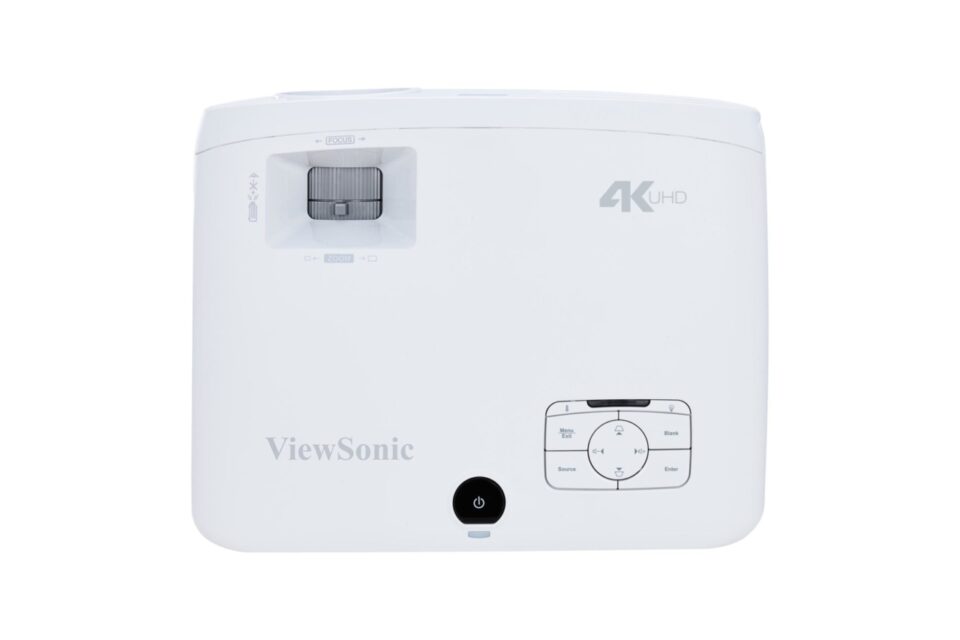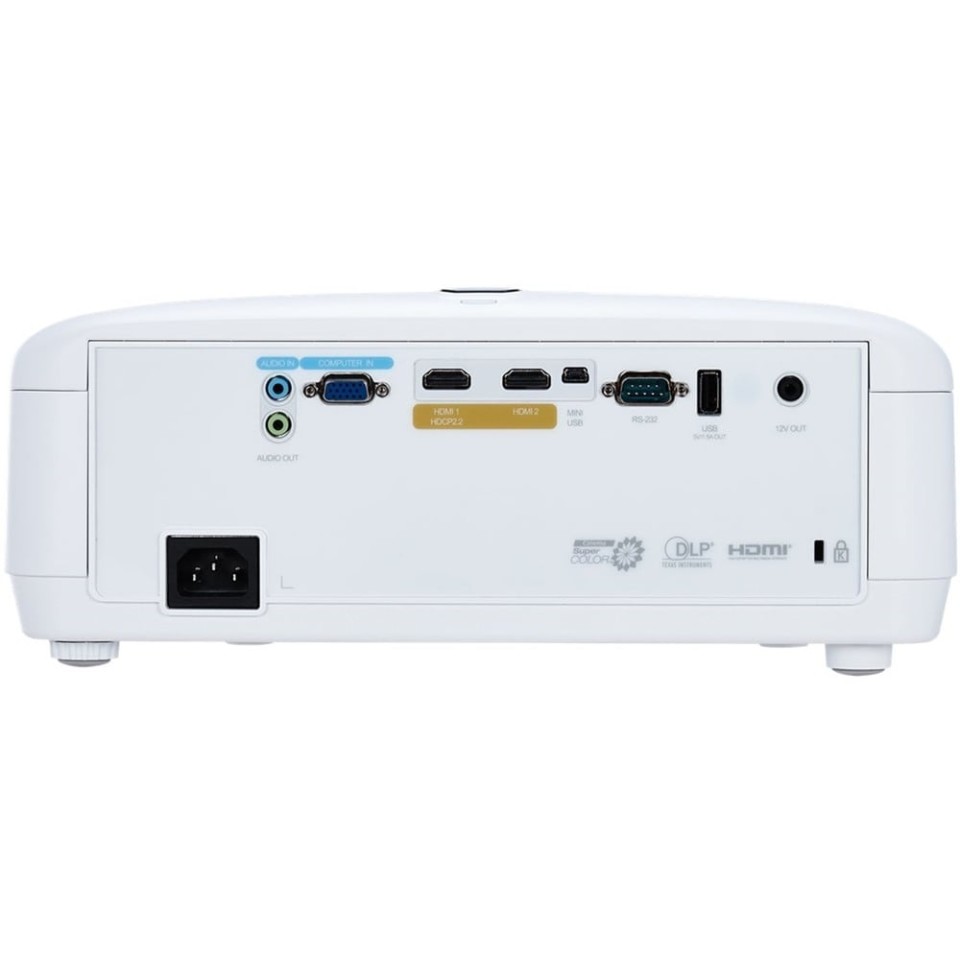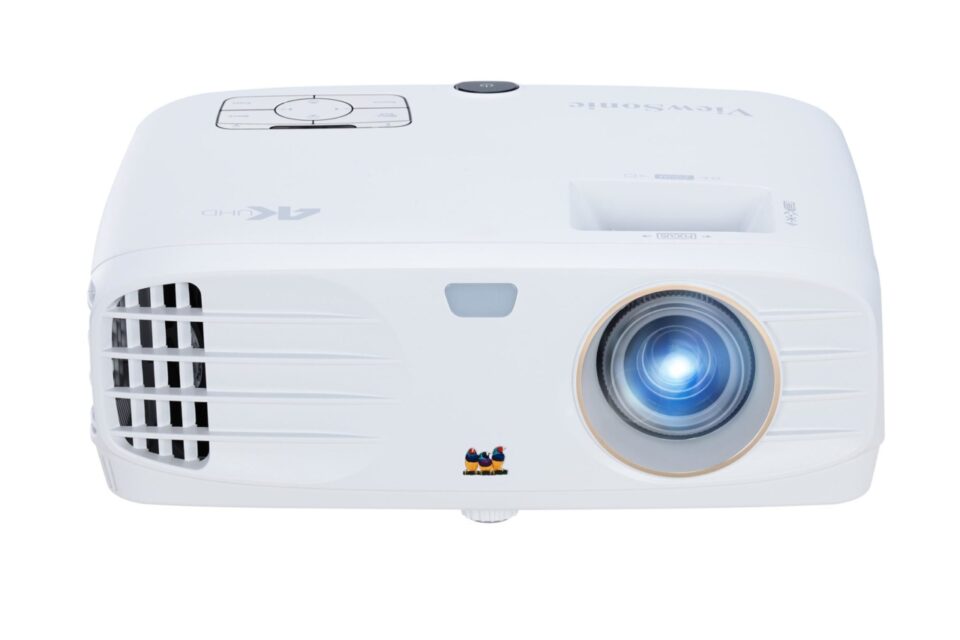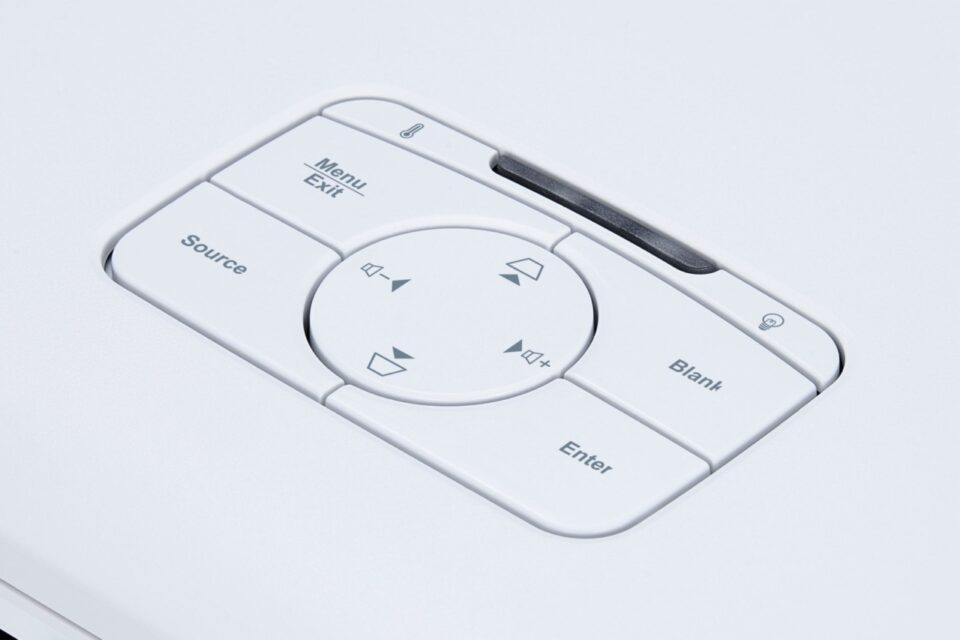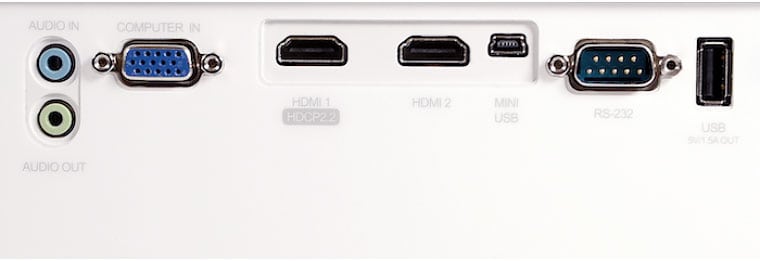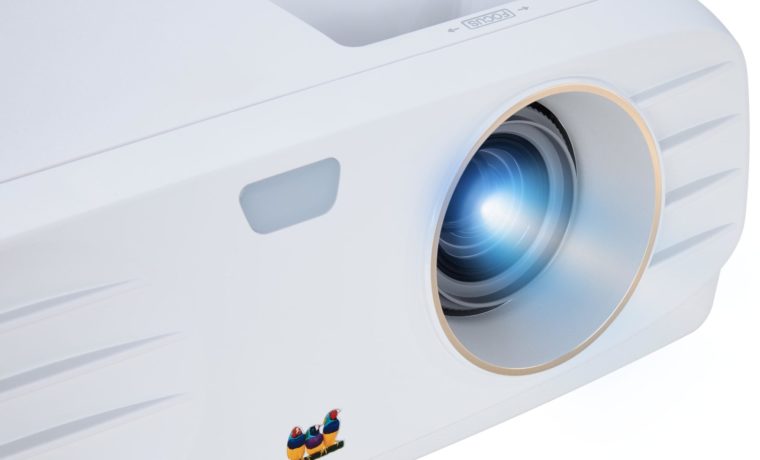We'll start with the nickel tour of the PX727-4K, then we’ll get into some more detail. From the front, you’ll notice that the manual 1.2:1 zoom lens is recessed and is offset to the side (to the right, if facing the projector). The IR sensor is in the center, at the top. Venting of hot air is found on the left side of the front.
This is a relatively small projector, so if you have it on a table, you probably won’t want to be sitting a foot or two forward of the projector and just to the right of it, or you will get very slowly cooked with warm air shooting from the vent. Down below the front is a screw thread height adjustable foot. That takes care of the front.
Looking at the top, right behind where the lens is, you'll find two lens controls – focus and zoom – to adjust. These controls are also recessed. When you go to adjust the zoom, the focus goes way out of focus. It's a minor nuisance. Just takes you a little extra time, if you are setting up frequently (surprise, the BenQ HT2550 exhibits the same issue.) The control panel is also on the top, as is the door to replace a lamp. All the inputs and connectors are to be found on the back of the PX727-4K.

